|
|
 Jen Jen |
 |
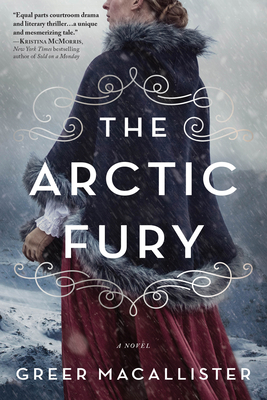
|
|
Arctic Fury
Greer Macallister
Arctic Fury is historical fiction set in the 1800s. Lady Jane Franklin’s husband and the explorers of his last expedition to the Arctic never come home. So, Lady Jane sends four separate expeditions to find and rescue, or more likely, find and return with the remains, of her husband. All four of these expeditions fail. Lady Jane then decides what she needs is to send out an all-female expedition. In the 1800s, this just wasn’t done. Lady Jane hires Virginia Reeve to put together a team, sort of—it turns out that Lady Jane has already selected most of the explorers, but Virginia gets to select two or three, and lead the team. Once assembled, the team heads to a Boston port, boards a ship manned by, well men, and heads toward the Arctic. In a nutshell, the ride to the Arctic does not go terribly well. And once the women get to the Arctic, it gets worse. I’m not spoiling anything here by telling you this because the reader knows from page one that the Virginia Reeve-led expedition must not have gone well because the book opens in a Boston court room. Virginia is on trial. Seated near Virginia are five members from the expedition in support of her. This is less than half of the original members of the expedition. The narrative goes back and forth between the trial, the expedition, and periodically re-visits Virginia’s childhood, which includes something harrowing. That is not revealed until the end of the book, although some readers may figure it out ahead of time—I honestly don’t think that will ruin the story for you. This is a great book for discussion!
|
| |
|
 |
|
Scorpionfish
Natalie Bakopoulos
Scorpionfish is a contemporary novel. Mira is a young woman whose parents unexpectedly die together. Mira decides to return to her childhood home, the city of Athens in Greece. Once there, she moves into an apartment in a complex in which the residents have balconies. Mira often spends evenings out on her balcony. So does her neighbor, known as The Captain. You know how some of the most intimate conversations happen either in the dark or in the car? The same sort of thing happens to Mira and The Captain, sitting on their balconies. They’re not facing each other and feel at ease recounting and sharing their stories. The Captain was a sea captain and while he’s not as young as Mira, he’s also not old enough to retire. Mira, in addition to mourning the deaths of her parents, is mourning the end of a romantic relationship she had with a Greek politician who is now engaged to a celebrity actress. This is one of those books in which not a lot of action is happening in the narrative, but there’s a great deal of action, of churning, in the minds and hearts of the characters. For groups that want to really delve into character histories and emotions, there’s a lot to discuss here and I think for tight-knit groups, it could lead to a really meaningful sharing of members’ own stories. |
| |
|
 |
|
Miss Grief and Other Stories
Constance Fenimore Woolson
For the most part, at Night-In, we present excellent books that you might not be familiar with by contemporary writers. This book definitely fits the bill for being something I’m sure you’re not familiar with, but the author is definitely not contemporary. She’s dead, and has been for some time - she died in 1894. I learned about her from our bookseller Tim. The author is Constance Fenimore Woolson. And yes, there’s a Fenimore connection—she was James Fenimore Cooper’s niece. Woolson was a contemporary of Henry James and, in fact, during their lifetimes, Woolson was considered to be the more successful writer. What is left of Woolson’s work in print are her short stories. Her stories tended to be divided up by geography—southern, Midwest, Great Lakes, and expats in Europe. Her writing is beautiful and her stories are complex and riveting. You can’t read them too quickly or you’ll miss a lot. One of my favorite stories in this collection is Rodman the Keeper, a story about ex-Colonel John Rodman who is now the keeper of a national cemetery. He takes the job very seriously. By chance, he discovers a neighbor in dire need of medical attention. Despite the neighbor being a southerner—remember how divided the country was in the 1800s—Rodman takes him in and cares for him. Issues of patriotism, neighborliness, race, and class are all packed into this gem of a story. In addition to reading Woolson’s work slowly, I also recommend you read the foreword and introduction, which basically comprise a fascinating mini-biography of Woolson. |
| |
|
|
|
|
 Sally Sally |
|
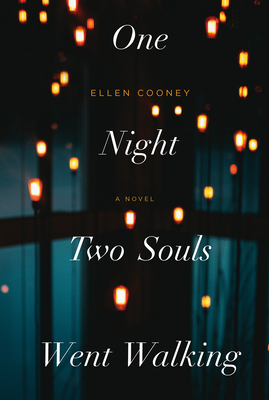
|
 |
One Night Two Souls Went Walking
Ellen Cooney
A number of years ago, my uncle had surgery and never woke up. After he’d been on life support for several days, my aunt asked me to join her and her daughters at his bedside when life support was removed. We’d been told that the end of his life would come quickly, but it didn’t. We stood by that bed all day. In the evening, one of my cousins leaned over and said, “It’s okay, Dad. You can go now.” Fifteen minutes later, he was gone.
I think we all have either experienced or heard about stories like that. The division between life and death is often called a veil, and it’s full of mystery.
This is the background for my favorite of this year’s Night In books, One Night Two Souls went Walking. The unnamed narrator is a hospital chaplain working the night shift. One night she makes her rounds, visiting some people who are seriously ill; others who aren’t. As she moves through the night, she’s accompanied by a dog who may or may not be a ghost. She thinks about her life. The night shift is taking a toll on her. Should she leave her job? No, she thinks, the patients are too important to her. And what about her old boyfriend, the one she thought was too young for her? He lives in Germany now, and is hinting he’d like to resume their relationship. She thinks about the question she’s wondered about her whole life: what is a soul?
The book has a dreamlike quality, but it’s grounded in specifics: a pizza delivered to her office in the middle of the night, the way her parents and much older siblings treat her with bemusement. There is humor in the book as well.
It’s a gentle, contemplative book, and ideal for our present moment. As our chaplain wants to tell one of her patients: "Please imagine what hope is, and please then have it."
|
| |
|
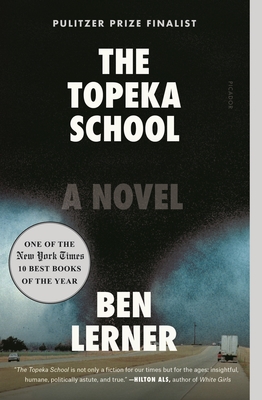 |
|
The Topeka School
Ben Lerner
The Topeka School, a novel, was a finalist for the Pulitzer Prize, and was on a ton of lists for best book of the year, including the New York Times and Barack Obama’s. When I started reading it, I didn’t like it, and I wondered what was wrong with me. What was I missing? My problem was primarily that it took me a while to get into the book. My take after finishing it, is that it’s a challenging book but rewarding.
At the most basic level, it’s the story of a family living in Topeka Kansas in the ‘90s. The parents, Jonathan and Jane, are psychologists working at the Foundation, a thinly disguised Menninger Clinic. Jane became well known after publishing a book which became a bestseller. The son, Adam, was a gifted high school debater who competed at the national level. These three characters take turns narrating chapters of the book. Jonathan and Jane were loving parents, and the family was close.
On a deeper lever, the narrative is darker. Fred Phelps—remember him?—from Westboro Baptist Church was leading protests, and one of his targets was Jane. Jonathan and Jane’s marriage was rocky at times, and a childhood concussion left Adam with recurring migraines. And there’s another story interwoven throughout the novel—that of Darren Eberheart. He’s a patient of Jonathan’s, a classmate of Adam’s, and his story is chilling. The use of language and persuasion are part of the book, and many reviewers have seen the book as an examination of how our country arrived at the political situation where we are today. That’s an interesting filter.
The book isn’t all serious, though. In the opening section, Adam and his girlfriend are in a boat in the middle of the night. His back is to her, and he’s engaged in an intense monologue. When he turns to look at her, he realizes she’s jumped out of the boat and swum away!
|
| |
|
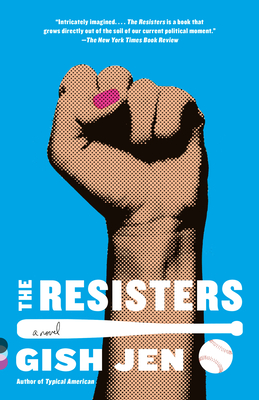
|
|
The Resisters
Gish Jen
You may know that publishers send advance readers copies of some books to booksellers before the books are published. They’re hoping a buzz will start, and also that we’ll fall in love and order a million copies. Before those advance copies go out, it’s not unusual for a smaller group of people to read the book. Some time ago, I heard that Ann Patchett was quite taken with one of them—The Resisters. Ann Patchett! So, of course I pestered our rep until I too had a copy. I have to tell you that the advance copy I got had a plain blue cover, so I had no idea that baseball—baseball!!--has a role in the novel.
The book is set in the near future, in Auto-America, where society is divided into two groups. The “Netted” have jobs and comfortable homes on high ground. The “Surplus”—isn’t that a chilling term to apply to human beings? live on swampland or even on the water. They are not allowed meaningful occupations.
Enter a Surplus couple. He was once a professor and she, amazingly, is a lawyer who is still working. Their only child, a daughter named Gwen, had an amazing arm from a young age. She plays in an underground baseball league which her parents organized.
About this time, Auto America decided to rejoin the Olympics, hoping to outdo ChinRussia. They would particularly like to beat ChinRussia in baseball. The plot thickens as they attempt to recruit Gwen. The Olympics are so important they will overlook that she is “Surplus.”
Gwen’s parents find themselves torn between their ideals, their existence, and their wishes for the best for their daughter.
The story is close enough to our society to be unsettling, even as we can relate to the lives and struggles of Gwen and her parents.
You don’t have to like Ann Patchett or baseball (although, really, how could that be?) to find this book an amazing read. Warning, though, it’s going to make you think!
|
| |
|
 |
|
The Travelers
Regina Porter
After George Floyd’s murder last May, sales of books dealing with racism skyrocketed. It wasn’t just at our store—this was a national phenomenon. Many titles were impossible to get for a time as publishers rushed to reprint them. Initially, readers were looking for non-fiction, but gradually they turned to fiction and poetry. And we all know fiction and poetry are often more “true” than non-fiction. The Travelers was released in early September, which was excellent timing.
If you casually pick up The Travelers, it might seem like many other family sagas. But take a closer look. The book is about two families, the Vincents and the Camphors, following them from mid-20th century into the Obama presidency. One family is Black, the other is white, and they are intertwined. Each chapter of the book has its own literary form and centers on different characters. At the heart of the book is an incident in 1966. Two Black characters are returning from a concert, unfortunately driving on a deserted road. They are pulled over by the police, who rough up the man and take the woman into the woods. (All violence off-stage.) Afterwards, the incident is never mentioned again. The characters go home and resume their lives, although no longer as a couple. And here is the power of story. It allows us to enter lives which are not our own and to experience realities which are new to us. At this time in our nation’s history, it’s a good thing for us to read such stories, and to talk together about them. The characters in this book are complex and live messy lives, just like our own.
I was grateful for the list of characters at the front of the book. There are a lot of them, and they reappear at different ages, in different settings. Don’t try to get them all down. Instead, put a marker at the page, dive into the book and refer to the list as needed.
Do yourself a favor—read this terrific book and immerse yourself in experiences outside your own. |
|
|
|
|
|
|
|

Ann |
|
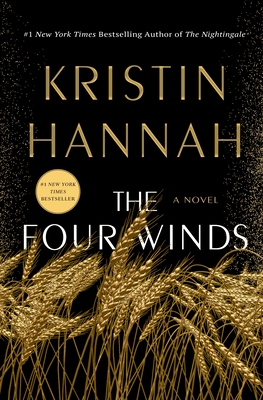
|
|
The Four Winds
Kristin Hannah
The story begins in Texas in the early 1920s. Elsa is disowned by her wealthy family who see her as an embarrassment - unattractive and incompetent. She marries into a farming family. She adapts to this drastic change in lifestyle, but her difficulties have just begun. As the Dust Bowl era descends upon the region, Elsa makes the difficult decision to leave Texas and head to California for the sake of her children’s health and in hopes of a brighter future. The migrants faced poverty and were treated unfairly by the growers and townspeople. Not wanting to draw negative attention to herself and her family, Elsa is initially fearful and reluctant to join in when others began to protest. In the end, her actions show her courage and sense of justice. If you’re a fan of historical fiction, you won’t want to miss The Four Winds. |
| |
|
|
|
|
|
|

Bob |
|
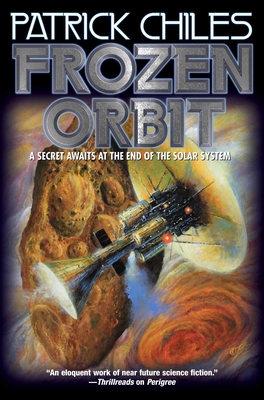
|
|
Frozen Orbit
Patrick Chiles
Well I’m back doing Sci-Fi and I found a great book with (ta-da!) a spaceship on the cover! Little chance of unicorns popping up in this one.
It’s a deep space adventure by two couples and an A.I. (Artificial Intelligence) control program, set in roughly current times. They are headed to Saturn but have an opportunity to go to Pluto which, as you learned in school, is a LONG way away. The technology they use for propulsion is quite different. In present day we shoot things into space with a fueled rocket that burns for a fixed time, usually less than an hour, and whatever speed it has attained will be how fast you go to your target (not counting gravity assists by whipping around a planet.) In this case they are using nuclear bombs to propel the spacecraft faster and faster, i.e. they are accelerating. By doing this they shorten their trip by years. But the real story revolves around the fact that they are not the first to do it! Hence the trip to Pluto to find out what happened to their predecessors. So you are following two journeys, one years ago and one today. A great read with an unexpected ending. I think you’ll like this one.
|
| |
|
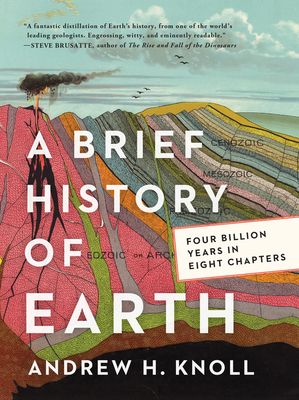 |
|
A Brief History of Earth
Andrew H. Knoll
Oh boy, a history book….but actually you’ll be surprised how interesting this book is and how the different eras fit together. It’s for people on the go, or as the cover says, ”Four billion years in eight chapters,” or 231 pages. Who would have thought you could do that? I’d say this is the best history book I’ve ever read. It’s very informative, clearly written, and packed with great transitions from one era to the next. So I kept reading deeper and deeper into the book, in anxious anticipation of when “people” are going to show up, only to have another catastrophe wipe out almost everything. Of course, saving the best ‘til last, the “humans” finally do show up. But I think you’ll find that the humans have not been good stewards of our planet and the predictions are not calming. If you read no other part of this book, make sure you read chapter 8, "Human Earth."
Note: this book will be released in April
and may be preordered now.
|
| |
|
|
|
|
|

Gail |
|
 |
|
|
| |

|
|
The Lady and the Highwayman
Sarah M. Eden
Penny Dreadful is the name of the small pamphlets that are all the rage among working class men. They only cost a penny and are full of adventure and mayhem. Fletcher Walker is one of the most popular authors. Proceeds from his writing and that of other authors help the secret Penny Dreadful Society. They help poor urchins that are treated badly by their employers. But Fletcher suddenly has competition from the elusive Mr. King. No one knows who he is. Fletcher enlists the help of Elizabeth Black, author of novels written for the upper-class Victorian ladies. She has a secret. At night she also writes the Penny Dreadfuls!
|
| |
|

|
|
Wild Life
Molly Gloss
Catherine Drummond is a free-thinking woman of the 1900’s. She wears men's clothes and shuns housework. She supports her five boys by writing women's adventure stories. When a young girl goes missing, Catherine joins the search team. Then she gets lost herself in the wilderness of the Pacific Northwest. She enters a mysterious world that challenges all her beliefs about the important things in life. Not only would I say this is an adventure story, it also dips into the Fantasy genre. |
| |
|
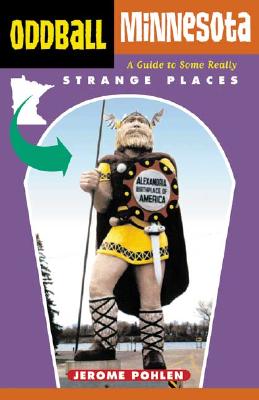
|
|
Oddball Minnesota: A Guide to some Really Strange Places
Jerome Pohlan
This is a fun book about all the interesting places to be found in our state, with some history thrown in, too. The book is divided into geographic regions with maps so places are easy to find. The book's copyright is 2003, so some addresses may be out of date. Yes, the Nevis Muskie is there along with Paul Bunyan's cradle in Akeley and St. Urho in Menahga. Also, a lot of places in Minnesota I have never heard of. Since the sights are grouped into regions, a road trip would be easy to plan. |
| |
|
|
|
|
|

Hannah |
|
 |
|
|
|
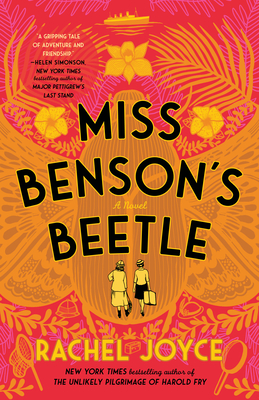
|
|
Miss Benson’s Beetle
Rachel Joyce
In 1944 Reverend Tobias Benson showed his ten-year-old daughter Margaret Incredible Creatures, a bookfull of animals that might exist but might not. She fell in love with a tiny, golden beetle rumored to live in New Caledonia. Margaret determined that someday she will find it. Her life went downhill from that moment. In middle age she suddenly quit her teaching job and decided to travel halfway around the world to seek the beetle. She needed a companion, and ended up with Enid Pretty, a young woman almost her polar opposite. This is Eleanor Oliphant meets Thelma and Louise. At first I thought it would be an amusing bit of fluff, but it has much more depth.
I first heard about this in an interview with Elizabeth Berg. Joyce particularly impressed me with the things she shared about her process and the genesis of this book. The back matter in the novel includes some of this. The book also includes an interview Joyce does with her main characters: “In fiction anything is possible.” Some of their discussion covers the sorts of things a book group might talk about. Other parts made me laugh out loud, literally.
|
| |
|
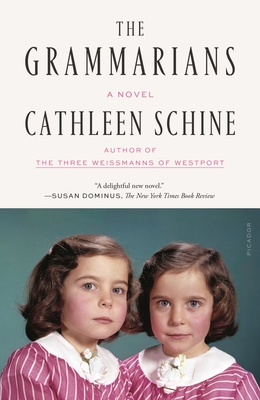
|
|
The Grammarians
Cathleen Schine
Yes, this is a novel about language. But it’s not titled Grammar, it’s The Grammarians. It’s about twin girls who intensely love both words and each other, or perhaps the unit they form together. They have one of those secret languages twins sometimes develop. When they are still in cribs one sister uses their language to call her twin an “insufferable pedant”! But their loving parents bring bottles and all is well. As girls they worship together at the altar of a used Webster’s unabridged dictionary, to their father’s delight and their mother’s consternation. They are entirely interdependent as young ladies, both still fascinated by language. However, there are different ways to love grammar. Is it better to be descriptive or prescriptive? Can their closeness survive the challenge raised by this question? |
| |
|
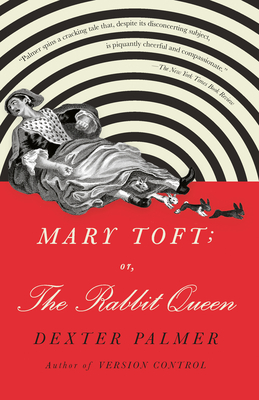
|
|
Mary Toft; or, The Rabbit Queen
Dexter Palmer
Beagle friend Jason Gobble recommended this book at Night In, describing it as an unusual novel that might appeal to those who want something different. It’s based on an actual historic event. In 1726 London was rocked because a woman was giving birth to rabbits.
There are two blurbs on the back of the book. According to The Wall Street Journal, “Palmer hews closely to historical records, a reasonable decision when history is this insane.”I certainly agree with that, but not with The New Yorker assessment, “[A] frolicsome period comedy.” I found the novel fascinating but not funny. It reminds me a bit of Bowlaway, another novel that others found comic but I did not. Mary Toft fascinated me, making me think about human nature, truth, belief, and denial, all essential issues today. The characterizations are marvelous, as are the details that recreate 18th century England. This book isn’t what I expected, but I do strongly recommend it. Just not if you’re looking for a laugh. |
| |
|
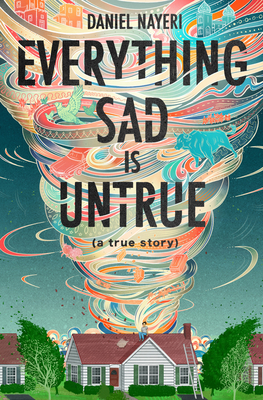
|
|
Everything Sad Is Untrue
Daniel Nayeri
This is a coming-of-age young adult memoir that is in parts fictional, but ittalks about stories in a way that explores the realities of myth, legend, memories, and Persian storytelling. It’s often funny and often heart-breaking. It’s also edifying: suddenly I see the difference between Sunnis and Shiites and understand who Kurds are. And I have a better insight into the challenges refugees face. The text includes a motif of conversation with Daniel’s wise, but not always so, teacher Mrs. Miller. I wonder if such a woman taught Daniel Nayeri.
|
| |
|
|
|
|
|
| |
|
|
|
|

Tim
|
|

|
|
The Saint Patrick’s Day Hero
Doug Mayfield
Sally urged me to take a look at this book, and I’m glad she did. I don’t think I’ve ever read anything that has so many threads to its story, woven together so masterfully, yet remaining so smooth and readable. What does that mean you ask? I’m in some difficulty to give you a quick easy answer. Maybe that’s the point. In life there are no easy answers. Relationships new and old change and evolve, maybe even suddenly end, all without a plan, and we’re expected to make sense of this chaos. What exactly is chaos? How does it affect our sense of self? You see… lots of difficult questions, and no easy answers. I became so involved with the main character that at one point he was about to do something that I realized, if he did, he would become hateful to me. Yet Sally had recommended this book in such a way I found myself distrusting/questioning myself as a reader, whether I understood the character, the author (who alerted me to pay attention to the spaces and silences, between what was being said), the book itself, Sally’s judgment….. CHAOS! I put the book aside, and slept (badly) on it. In the morning, over coffee, I resumed reading, and Mayfield resolved all of it. What in the world is he talking about, you’re asking? Well here’s an opportunity to become an ‘involved reader,” not a ‘passive spectator’, and the change is most welcome.
Sally recently recommended this book on MPR’s “Ask a Bookseller.” Listen to the interview here.
|
| |
|

|
|
The Lost Diary of Venice
Margaux DeRoux
Rose Newlin owns a small bookstore in a college town. Her father died recently, and she’s working her way through that loss. As a sideline to her bookstore business, she does book restoration. One day a man comes into the shop with a family heirloom, a very old manuscript that needs tender loving care. As she begins work on the manuscript, it becomes clear it’s a good deal more than just an old book. It’s a palimpsest, a document written crosswise over an older document, usually in order to save the expense of paper or vellum. In this case it’s a treatise on Art, handwritten by a Venetian Renaissance Painter, Giovanni Lomazzo. He wrote over an older diary, partially scraped away, having to do with his affair with a Venetian courtesan. As in St. Patrick’s Day Hero, DeRuox’s book is asking to be read with attention to what’s between the lines, as well as what’s not being said. It was a happy accident that I read these two books so close together, so that they sort of cross-fertilized with the notion of text and sub-text. It's either that, or I'm going mad with this self-isolation.
|
|
Would you like to be a guest reviewer?
Email Sally at sally@beagleandwolf.com |
| |
|
|
|
|
|
— page top —
|
|

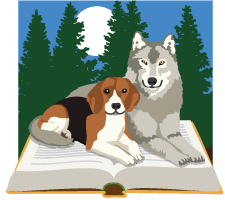

 Jen
Jen

 Sally
Sally





















